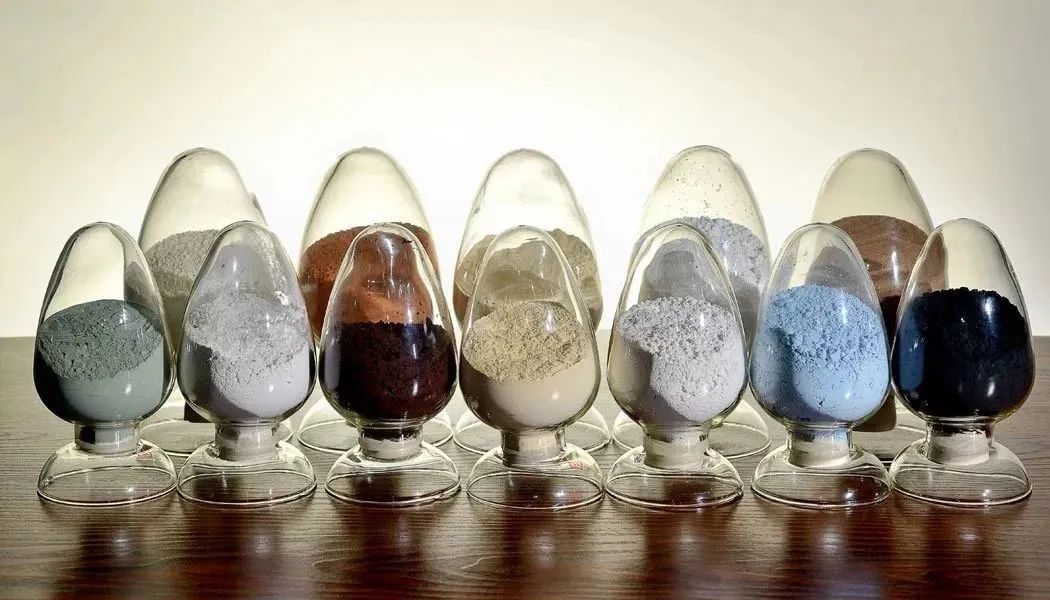-
Price trend of praseodymium neodymium dysprosium terbium in April 2023
Price trend of praseodymium neodymium dysprosium terbium in April 2023 PrNd Metal Price Trend April 2023 TREM≥99% Nd 75-80%ex-works China price CNY/mt The price of PrNd metal has a decisive effect on the price of neodymium magnets. DyFe Alloy Price Trend April 2023 TREM≥99.5%Dy≥80%ex-work...Read more -
The main uses of rare earth metals
Currently, rare earth elements are mainly used in two major areas: traditional and high-tech. In traditional applications, due to the high activity of rare earth metals, they can purify other metals and are widely used in the metallurgical industry. Adding rare earth oxides to smelting steel can...Read more -

Rare earth metallurgical methods
ere are two general methods of rare earth metallurgy, namely hydrometallurgy and pyrometallurgy. Hydrometallurgy belongs to the chemical metallurgy method, and the entire process is mostly in solution and solvent. For example, the decomposition of rare earth concentrates, separation and extractio...Read more -

Application of Rare Earth in Composite Materials
Application of Rare Earth in Composite Materials Rare earth elements have unique 4f electronic structure, large atomic magnetic moment, strong spin coupling and other characteristics. When forming complexes with other elements, their coordination number can vary from 6 to 12. Rare earth compound...Read more -
Warmly welcome customers to our company for on-site visits, inspections, and business negotiations
High quality products and services, sophisticated equipment and technology, and good industry development prospects are important reasons for attracting this customer visit. Manager Albert and Daisy warmly received Russian guests from afar on behalf of the company. The meeting dis...Read more -

Are Rare Earth Metals or Minerals?
Are Rare Earth Metals or Minerals? Rare earth is a metal. Rare earth is a collective term for 17 metal elements in the periodic table, including lanthanide elements and scandium and yttrium. There are 250 types of rare earth minerals in nature. The first person who discovered rare earth was Finn...Read more -

Preparation of ultrafine rare earth oxides
Preparation of ultrafine rare earth oxides Ultrafine rare earth compounds have a wider range of uses compared to rare earth compounds with general particle sizes, and there is currently more research on them. The preparation methods are divided into solid phase method, liquid phase method, and ...Read more -

The Application of Rare Earth in Medicine
The application and theoretical issues of rare earths in medicine have long been highly valued research projects worldwide. People have long discovered the pharmacological effects of rare earths. The earliest application in medicine was cerium salts, such as cerium oxalate, which can be used to...Read more -

Preparation of Rare Earth Metals
Preparation of Rare Earth Metals The production of rare earth metals is also known as rare earth pyrometallurgical production. Rare earth metals are generally divided into mixed rare earth metals and single rare earth metals. The composition of mixed rare earth metals is similar to the original ...Read more -
Apple will achieve full use of recycled rare earth element neodymium iron boron by 2025
Apple announced on its official website that by 2025, it will achieve the use of 100% recycled cobalt in all Apple designed batteries. At the same time, magnets (i.e. neodymium iron boron) in Apple devices will be completely recycled rare earth elements, and all Apple designed printed circuit boa...Read more -
Weekly price trend of neodymium magnet raw material 10-14 April
An overview of the weekly price trend of neodymium magnet raw material. PrNd Metal Price Trend 10-14 April TREM≥99%Nd 75-80%ex-works China price CNY/mt The price of PrNd metal has a decisive effect on the price of neodymium magnets. DyFe Alloy Price Trend 10-14 April TREM≥99.5% Dy280%ex...Read more -

Preparation Technology of Rare Earth Nanomaterials
At present, both production and application of nanomaterials have attracted attention from various countries. China’s nanotechnology continues to make progress, and industrial production or trial production has been successfully carried out in nanoscale SiO2, TiO2, Al2O3, ZnO2, Fe2O3 and o...Read more